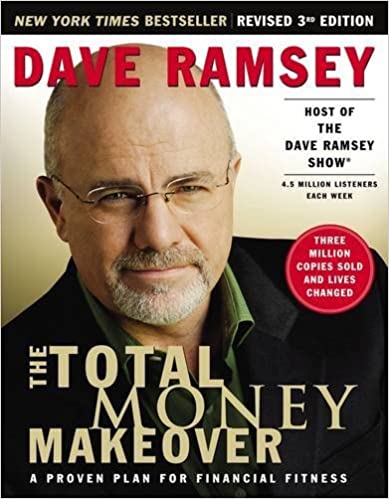The Total Money Makeover — Book Summary
Introduction
The book is one of its kind, which walks the reader through the process of being affluent and wealthy. The process consists of steps which must be taken in sequence to be financially fit. The steps to be followed are not age bound, and if followed, guarantee the financial fitness.
Interesting quotes from the book
You need to reach the point where your money works harder than you do.
— Dave Ramsey, The Total Money Makeover
Most of us know what to do, but we just don’t do it. If I can control the guy in the mirror, I can be skinny and rich.
— Dave Ramsey, The Total Money Makeover
You are the king of your future.
— Dave Ramsey, The Total Money Makeover
Summary of the book The Total Money Makeover
I love to be wealthy. I must be wealthy. Can I be wealthy? How much? Being wealthy is very subjective. Objectively, being wealthy means to retire with dignity, to give, leave an inheritance, and have some expensive fun. I can be wealthy by looking inside for help and self-control.
The self can be controlled by busting myths, thinking long term, staying focused and be myopic to see your wealthy picture. The money handled in this way, works in good time as well as bad times. Money management is eighty percent behavior and twenty percent financial knowledge.
The behavior of an average family is based on myths, hearsay, and what others think. Therefore, they remain forever a slave to some banker, to the government, and to the "needs" of family. Due to this, they have too much debt, too little savings, and no sense of control over their life.
Thus, the foremost thing is to control one's behavior. The behavior can be controlled by taking control of yourself. In short, no matter how good an idea of being wealthy, it will not work unless YOU make it work, just like getting in better physical shape. No matter how good a fitness trainer you hire, you will not be in good shape unless YOU work. But mostly, people remain in denial that they are in bad shape until they are broke.
This book is abstractly organized in two major sections. First, the book busts some long-ingrained financial myths. Afterward, it walks you through the steps to be wealthy by managing and working on yourself and solving the problems.
Ninety percent of solving a problem is, realizing there is one. Having a debt is a significant problem but not realized by the ordinary people. They take student loans, car loans, and home loans just because they feel the impulse, and they want to impress others. They always have more months remaining than the monthly income and live paycheck to paycheck. So, what to do?
First, burst the financial myths
The Americans believe that they don't have time to budget, plan retirement or estate plan. However, time and again, it has been proven that there is no time not to do it. Similarly, another dangerous myth is that the consolidation of debt is right, and it saves interest. But it is not, as through this, one is only managing the symptom and the debt remains there. Yet another dangerous myth is that debt can used as a tool to prosperity. However, debt in any form does not bring prosperity, and none of the wealthy people use it.
Similarly, gambling is a toll on the poor people, and using gambling as a tool to be wealthy is a myth. Similarly, it is mythical that lending money or cosigning a debt to friends or family is about helping them. No, it's not! Finally, it's a myth to consider tools such as Cash Advance, Payday Loans, Rent-to-Own, Title Pawning, and Tote-the-Note Car Lots to help lower-income people get ahead, but they are not.
Now that the myths are addressed, there is one important thing left, before we leap to be wealthy.
First Thing First
Tighten up your socks and be current with all your payments. Know how much is going to which lender and how much is left to all lenders. If you are behind payments to any of the lenders, be current. If you don't have enough funds to become current on payments, do whatever you can, work extra, sell pizzas, have a garage sale, and cut down on expenditures.
Once current, it's time to write the budget. Do this in collaboration with the better half. Write the budget like you make your departmental office budget. Everything is well deliberated on, and nothing gets changed. In case of any emergency, call meeting with the stakeholders (your better half), cut the expenses from other expenditures to make up for the emergency. Borrowing is not allowed.
Now that you are current and have written the budget, you are ready to take the first baby step.
First baby step: Save $1000 Fast.
The first thing is to start saving $1000 cash as an emergency fund ASAP. One rule of thumb can be that if the household income is under $20,000 per annum, $500 must be saved as an emergency fund. On the other hand, if the household income is higher than $20,000 per annum, $1000 must be saved as an emergency fund.
It will be difficult but do it, period! Squeeze the expenditures, use garage sale, work for extra hours, get another job, get crazy and do it. Once you have the money in the emergency fund, just hide. Hide it at place, where you cannot get it quickly, curbing impulsive buying. But remember, the emergency fund must be in liquid. Once the emergency fund or the part thereof is utilized, replenish it as fast as you can, even if this means halting baby step two and returning to baby step one.
Baby Step Two: The Debt Snowball
The way, we suggest paying the debt, is called the Debt Snowball. Here is how the Debt Snowball works. List your debts in order, with the smallest debt first. Do not be concerned with interest rates or terms unless two debts have similar payoffs, then list the higher-interest-rate debt first. Paying the little debts off first gives you quick feedback, and keeps you motivated. The only time to pay off a more substantial debt sooner than a smaller one is a big-time emergency such as owing the IRS and having them come after you, or in foreclosure situations. Once all the debts are listed from smallest to largest, start paying the minimum payments for all debts except the smallest ones. Pay the smallest ones in full.
Baby Step Three: Finish (Complete) the Emergency Fund
A fully-funded emergency fund covers three to six months of expenses. Emergency is something that was not expected, has a significant impact on you and your family, and you fail to live normally without covering it. The amount of emergency funds should be enough to cover the expenses of three to six months, at least. Do not invest the emergency fund to gain more money. Remember, it's a trap. Keep the emergency fund liquid, ready cash.
At this stage, now a family may consider saving for cash purchase or down payment of a home before moving to the Baby Step Four.
Baby Step Four: Invest 15 Percent of Your Income in Retirement
This step is about wealth building. This step is based on a simple rule; invest 15 percent of your annual gross pay-before-tax. To leverage on compound interest, start early.
Why not save more than 15 percent? It's because you must save for kids' college education and pay the home debt early.
Baby Step Five: Save for College
Save for the college education of your kids. It is crucial. The college tuition fee increases more significantly than the annual inflation rate. Consider saving in Educational Savings Account (ESA), funded in a growth-stock mutual fund. In case you are short of time for college savings, find the college of competitive fee structure facilitated by on-campus living and eating, and above all, find scholarships.
Baby Step Six: Pay Off Your Home Mortgage
If you have remained focused and have worked against the culture of living on debt and making others leave impressed, it will take not more than seven years to pay off the home mortgage from the day you started to choose financially fit. Pay off your home mortgage by paying more than required with any extra dollar available.
Baby Step Seven: Build Wealth
If you have reached at step seven, you are one amongst the luckiest top two percentile of the Americans. There is no debt on your shoulders to worry about, no payments due at the start of the month, you have saved for college fees, and investing at 15 percent of your gross salary. Remember, wealth is good for FUN, good to INVEST, and good to GIVE, but it may not make you trouble-free. Be the boss of your money and surround yourself with a team of trusted companions having a teacher's heart.
Build wealth so that you reach the pinnacle point. Pinnacle Point in ones wealth journey is the point after which the money makes more money than you do; it works harder than you do. It is the time when you are officially wealthy, Well Done!
Review of the book The Total Money Makeover
This book is a fantastic book if you really want to win big at your financials. The best thing about the book is that it teaches you to become the master of your own financial destiny. Copied with real case studies, it walks you through the complete step of your own financial makeover. Between the lines, the book also preaches to trust your better half and you can achieve your ambitions with his/her relentless support. The book has helped me overcome my fear about the financial matters in the age when, I may not be as strong as today. And the formula is simple – live like no one else now, to live like no one else later. Adios!
Conclusion
The book "The Total Money Makeover" is an awesome read and a recipe to be become wealthy. It does not teach you how "to" become millionaire, but it does teach you how you "will" become millionaire. It's a step by step guide of your journey to become wealthy. It is especially for those readers who have happened to live paycheck to paycheck and often find more months left than the pay. This book will help the people to become master of their own finances and make their money earn more and faster than themselves.
Don't miss the other book summaries on SunInMe.org

